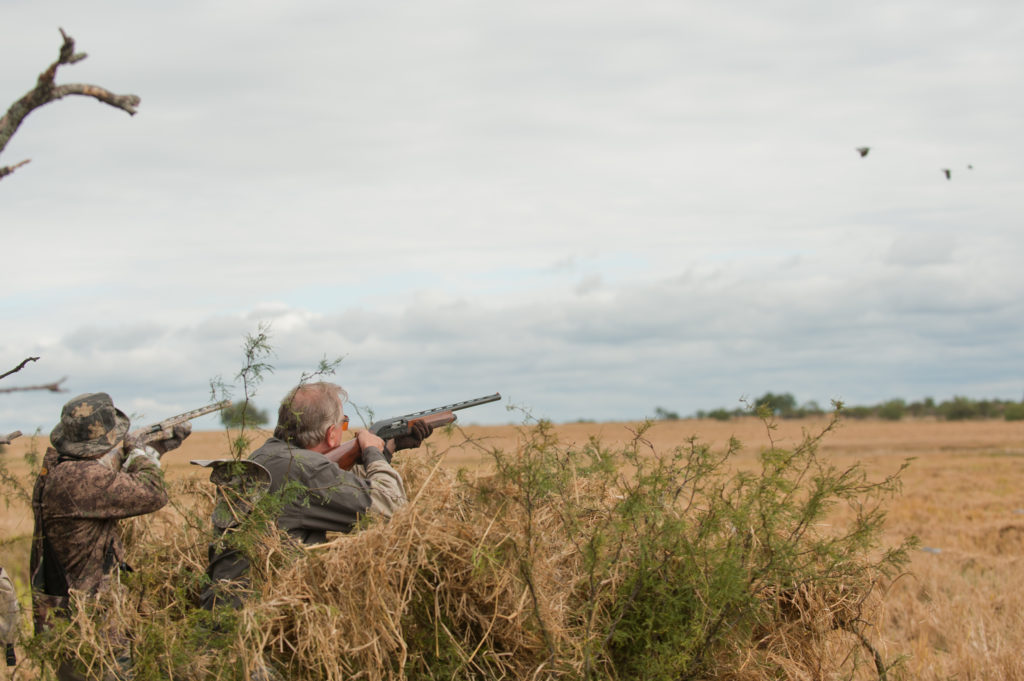Dove hunting stands as a favorite pastime for many, especially with its combination of challenge and reward. To master this pursuit, it’s essential to understand the key tools, techniques, and strategies that make the difference in a successful hunt. Whether you’re new to the field or looking to sharpen your skills, this guide provides an in-depth look at every element involved in effective dove hunting.
With a commitment to well-rounded preparation, choosing the right locations, and employing effective strategies, dove hunting can be a truly satisfying experience. This guide includes advice for seasoned hunters and newcomers alike, covering everything from gear selection to hunting techniques and field tactics.
Choosing the Right Gear for Dove Hunting
The tools you bring can significantly impact your hunting success, making it essential to prioritize quality and purpose. For dove hunting, the primary tools include a reliable shotgun, proper ammunition, and various accessories designed to enhance efficiency in the field. Shotgun selection should match the hunter’s preference and comfort level, yet be adaptable to different hunting situations.
Many dove hunters favor a 20-gauge or 12-gauge shotgun due to its versatility in providing sufficient firepower for various conditions. Although there’s debate over the “perfect” gauge for dove hunting, personal preference plays a crucial role in selecting one that feels comfortable. Ammunition choices are equally important, with a preference for lightweight, small pellets like #7.5 or #8 shot. These provide enough spread to improve accuracy without excess weight.
Another essential part of the gear is protective clothing that blends well with the environment. Camouflage plays a critical role here, helping hunters stay undetected. Choosing breathable fabrics also aids in comfort, particularly during early-season hunts in warm climates. For added utility, select clothing with pockets to store shells and small items conveniently.
Techniques to Increase Success Rates
Mastering dove hunting requires more than shooting skill alone; understanding bird behavior and adopting effective strategies also contribute to a rewarding hunt. Dove hunting success often comes down to timing, positioning, and patience. By practicing these elements, hunters can significantly improve their field results.
Doves are most active during dawn and dusk, making these times ideal for hunting. The key is to position yourself along established flight paths, such as near water sources, food plots, or roosting sites. Recognizing and setting up in areas that doves frequent allows for better targeting opportunities.
Successful dove hunters also adapt to changes in flight patterns, adjusting positions as needed to intercept birds. This approach, known as “pass shooting,” can be highly effective if you’re stationed along popular paths that doves use when moving between feeding and roosting areas. Reading the birds’ movements and adjusting your approach to match their speed and altitude further enhances shooting accuracy.
Patience is crucial in dove hunting, as it’s common to wait for birds to approach before taking a shot. Avoid rushing into position or firing hastily, as this often spooks the flock. Instead, remain still, stay low, and wait for doves to come within range before taking an accurate shot. Patience and timing, combined with effective positioning, can dramatically improve results.
Dove Behavior and Adaptation Techniques
Observing dove behavior provides valuable insights into how they navigate their environment, which can inform hunting strategies. Doves are creatures of habit, often returning to specific sites for feeding, roosting, and water. By scouting ahead and identifying these locations, hunters gain a strategic advantage.
During the early season, doves flock in larger numbers, making them easier to locate and track. As the season progresses, however, doves become more wary due to increased hunting pressure, often changing patterns to avoid heavily hunted areas. Adjusting hunting strategies to follow these shifts can yield better results. Moving between locations that doves favor can help avoid overhunted areas, ensuring consistent encounters with birds.
Texas dove hunting, for example, can provide a rich experience for enthusiasts looking for diverse landscapes that support active bird populations. With its range of fields, water sources, and open land, Texas offers ideal conditions that attract migrating doves, especially during peak hunting seasons.
Natural feeding habits also inform strategy, as doves feed on grains like millet, wheat, and sunflower seeds. Positioning near fields with such crops increases the likelihood of encountering doves. Additionally, understanding how weather patterns affect dove behavior offers more advantages, particularly during periods of heavy rain or sudden cold snaps, when birds seek shelter. Recognizing how weather impacts their activity can further refine your approach.
Tactics for Improved Shooting Accuracy
Accuracy is paramount in dove hunting, as the birds’ swift, erratic flight patterns make them challenging targets. Effective shot placement requires practice, anticipation, and the right stance. Doves tend to fly low and fast, so adopting a shooting stance that allows for quick movement can enhance performance.
One technique involves following the bird’s flight path smoothly before taking the shot. Rather than aiming directly at the dove, aim slightly ahead of its path to account for movement and distance. This “leading” technique is vital in increasing the chance of a clean shot. Consistent practice using this approach can improve accuracy over time, making it easier to hit birds in motion.
For hunters looking to enhance accuracy, range time before hunting season can help refine these skills. Practicing with clay targets is an effective way to simulate the speed and movement of doves, allowing hunters to improve shot timing. Many hunters find that regular practice with clay pigeons hones their aim, preparing them for fast-paced, real-world dove hunting situations.
Additionally, using modified choke tubes allows for more spread in the shot pattern, increasing the likelihood of a hit. While some hunters prefer tighter patterns, a modified or improved cylinder choke typically provides an ideal spread for doves. Testing different chokes and practicing with various spread patterns helps hunters understand which setup best fits their shooting style.
Planning, Scouting, and Ethical Practices
Preparation is crucial in dove hunting, encompassing everything from scouting locations to adopting ethical hunting practices. Researching and visiting hunting areas in advance allows hunters to understand the terrain, identify bird activity, and select optimal spots for the day of the hunt.
Dove hunting should always incorporate responsible practices, including respecting local hunting regulations, bag limits, and seasonal restrictions. Adhering to these guidelines not only supports conservation efforts but also promotes sustainable hunting that preserves dove populations for future seasons.
Scouting remains one of the most effective ways to ensure a successful hunt. Observing bird patterns before the season provides insight into preferred feeding sites, water sources, and roosting locations. These spots typically become key areas for setting up blinds or positioning for the hunt. Taking time to scout also minimizes disruptive movement during hunting, as pre-scouted areas allow hunters to approach quietly and with precision.
Ethics in hunting extend to how doves are retrieved, handled, and respected. Ensuring a clean shot reduces the chance of wounding birds unnecessarily. Furthermore, retrieving downed birds promptly prevents waste, and properly cleaning and storing harvested doves enhances the overall experience. Ethical hunting respects wildlife, contributes to conservation, and reinforces a responsible approach to hunting.
Final Thoughts
Dove hunting combines the thrill of the chase with the rewards of skillful, mindful hunting. Mastering dove hunting requires careful attention to the tools, techniques, and strategies necessary for success in the field. By investing in the right gear, understanding dove behavior, and practicing effective shooting techniques, hunters enhance their chances of a rewarding hunt.
Preparation, patience, and respect for wildlife underscore the best practices in dove hunting. Scouting, planning, and adapting to bird behavior allow hunters to achieve higher levels of success, regardless of experience. Each trip into the field offers new lessons, contributing to a deeper understanding and appreciation of dove hunting as both a skill and an art form.
By incorporating these techniques, hunters of all skill levels can look forward to productive hunts filled with satisfying moments and lasting memories. For those who love the sport, dove hunting presents an ongoing journey of improvement, challenge, and the joy of outdoor adventure.




